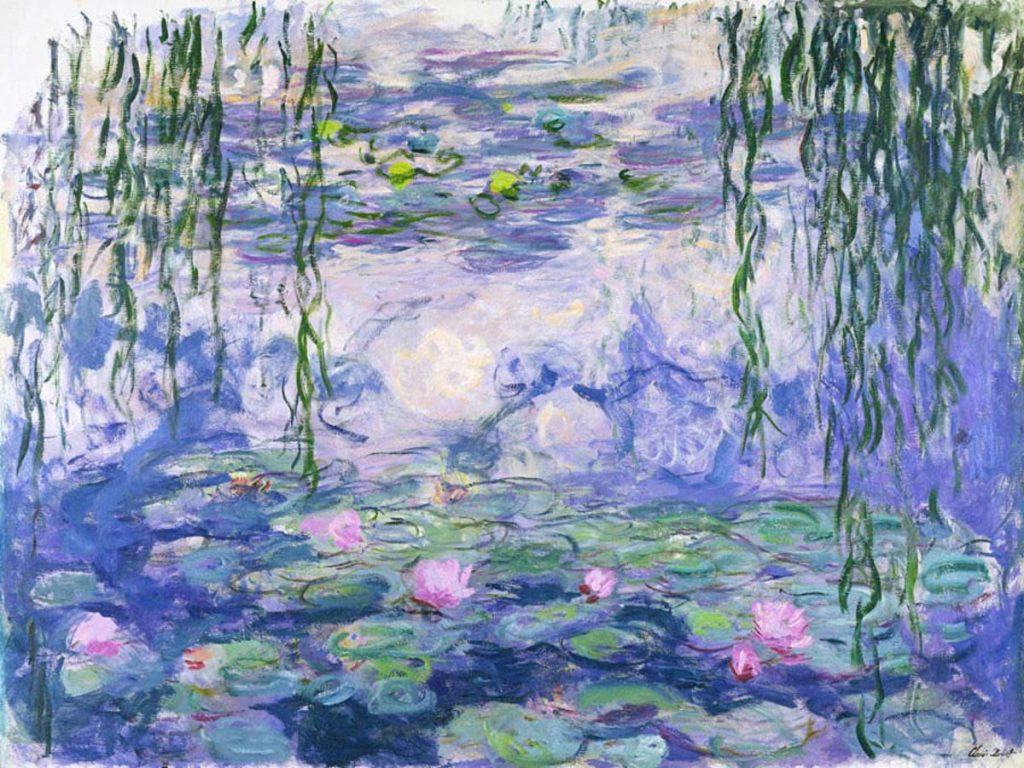
The Impressionists are clearly the most favored school of art in contemporary America, and of all the Impressionists, Monet paintings lead in popularity. Working in rapid brushstrokes over a canvas prepared with a white undercoat, Monet created paintings that are luminous, full of air and sunshine and motion. Monet’s Paintings is the true painter of light.
Who Was Claude Monet?
Claude Monet was born in November 14, 1840 in Rue Laffite, Paris, France, and enrolled in the Académie Suisse. After an art exhibition in 1874, a critic insultingly dubbed Monet’s painting style “Impressionism,” since it was more concerned with form and bright than the known realism, and the term stuck. Monet struggled with deep depression, poverty and sickness throughout his life. He died in 1926 December 5, 1926, Giverny, France.
Monet’s Paintings: Waterlilies
Throughout his career, Monet loved to work in series. Whether the subject was haystacks, the Rouen Cathedral, or his own waterlily pond, he painted the same image over and over, studying the immense changes created only by light. Of all Monet paintings, the 1899 Waterlily Pond with the Japanese bridge is probably the most famous.
Rarely does great art intersect so completely with decorative art. This painting is technically a masterpiece. Its vertical and horizontal brushwork is carefully modulated, yet only the solid form of the bridge keeps it from tipping over into abstraction. Yet it is also a beautiful painting with an air of serenity and delight.
The very fact that Monet paintings are so universally loved puts them in danger of becoming banal pieces of decoration. Prints, especially, fail to capture the genius of the work. While no reproduction can recreate the power of the original (not least because of its immense size), a hand-painted reproduction in oils is more likely to retain some of the energy that makes them more than just “pretty.”
Thank you for reading the article about Monet’s Paintings! If you have any further questions about this topic please contact us.
